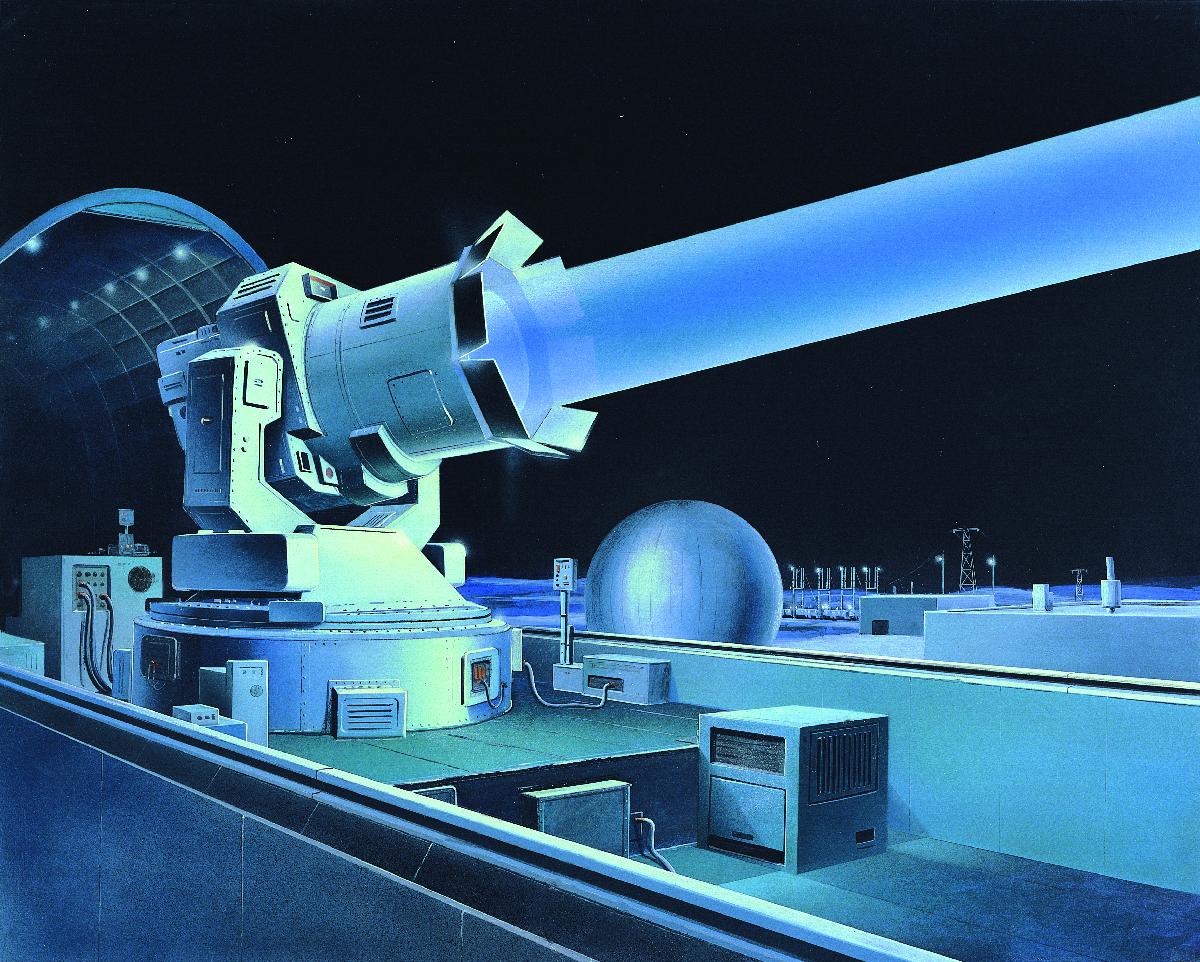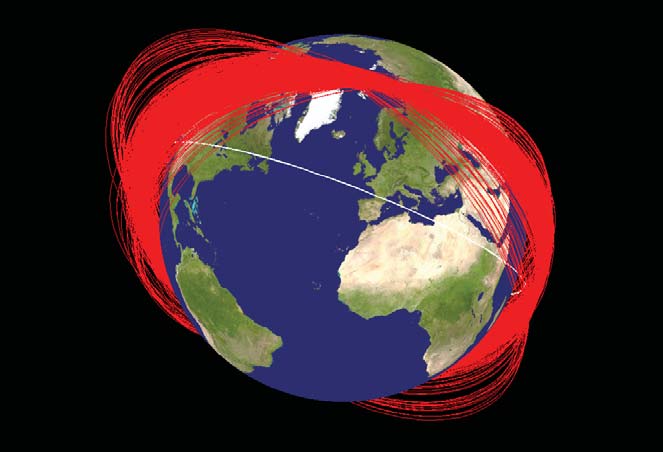|
Dong Neng-2
Dong Neng-2 () is an anti-satellite missile of the People's Liberation Army, developed in the early 2010s. It is designed as a low-earth orbit interceptor which destroys orbiting satellites by high speed kinetic impact.William Lowther, 2012-10-18China to test new anti-satellite weapon: report Taipei Times See also *2007 Chinese anti-satellite missile test On 11 January 2007, China conducted an anti-satellite missile test. A Chinese weather satellite—the FY-1C (COSPAR 1999-025A) polar orbit satellite of the Fengyun series, at an altitude of , with a mass of —was destroyed by a kinetic kill vehic ... References Anti-satellite missiles Anti-ballistic missiles of the People's Republic of China Military equipment introduced in the 2010s {{China-mil-stub ... [...More Info...] [...Related Items...] OR: [Wikipedia] [Google] [Baidu] |
Anti-satellite Weapon
Anti-satellite weapons (ASAT) are space weapons designed to incapacitate or destroy satellites for strategic or tactical purposes. Several nations possess operational ASAT systems. Although no ASAT system has been utilised in warfare, a few countries ( China, India, Russia, United Kingdom and the United States) have successfully shot down their own satellites to demonstrate their ASAT capabilities in a show of force. ASATs have also been used to remove decommissioned satellites. ASAT roles include: defensive measures against an adversary's space-based and nuclear weapons, a force multiplier for a nuclear first strike, a countermeasure against an adversary's anti-ballistic missile defence (ABM), an asymmetric counter to a technologically superior adversary, and a counter-value weapon. Use of ASATs generates space debris, which can collide with other satellites and generate more space debris. A cascading multiplication of space debris could cause Earth to suffer from ... [...More Info...] [...Related Items...] OR: [Wikipedia] [Google] [Baidu] |
Missile
In military terminology, a missile is a missile guidance, guided airborne ranged weapon capable of self-propelled flight usually by a jet engine or rocket motor. Missiles are thus also called guided missiles or guided rockets (when a previously unguided rocket is made guided). Missiles have five system components: targeting (warfare), targeting, guidance system, flight system, engine and warhead. Missiles come in types adapted for different purposes: surface-to-surface missile, surface-to-surface and air-to-surface missiles (ballistic missile, ballistic, cruise missile, cruise, anti-ship missile, anti-ship, anti-submarine missile, anti-submarine, anti-tank missile, anti-tank, etc.), surface-to-air missiles (and anti-ballistic missile, anti-ballistic), air-to-air missiles, and anti-satellite weapons. Airborne explosive devices without propulsion are referred to as shell (projectile), shells if fired by an artillery piece and bombs if dropped by an aircraft. Unguided jet- or rocke ... [...More Info...] [...Related Items...] OR: [Wikipedia] [Google] [Baidu] |
People's Liberation Army
The People's Liberation Army (PLA) is the principal military force of the People's Republic of China and the armed wing of the Chinese Communist Party (CCP). The PLA consists of five service branches: the Ground Force, Navy, Air Force, Rocket Force, and Strategic Support Force. It is under the leadership of the Central Military Commission (CMC) with its chairman as commander-in-chief. The PLA can trace its origins during the Republican Era to the left-wing units of the National Revolutionary Army (NRA) of the Kuomintang (KMT) when they broke away on 1 August 1927 in an uprising against the nationalist government as the Chinese Red Army before being reintegrated into the NRA as units of New Fourth Army and Eighth Route Army during the Second Sino-Japanese War. The two NRA communist units were reconstituted into the PLA on 10 October 1947. Today, the majority of military units around the country are assigned to one of five theater commands by geographical locat ... [...More Info...] [...Related Items...] OR: [Wikipedia] [Google] [Baidu] |
Low Earth Orbit
A low Earth orbit (LEO) is an orbit around Earth with a period of 128 minutes or less (making at least 11.25 orbits per day) and an eccentricity less than 0.25. Most of the artificial objects in outer space are in LEO, with an altitude never more than about one-third of the radius of Earth. The term ''LEO region'' is also used for the area of space below an altitude of (about one-third of Earth's radius). Objects in orbits that pass through this zone, even if they have an apogee further out or are sub-orbital, are carefully tracked since they present a collision risk to the many LEO satellites. All crewed space stations to date have been within LEO. From 1968 to 1972, the Apollo program's lunar missions sent humans beyond LEO. Since the end of the Apollo program, no human spaceflights have been beyond LEO. Defining characteristics A wide variety of sources define LEO in terms of altitude. The altitude of an object in an elliptic orbit can vary significantly along the ... [...More Info...] [...Related Items...] OR: [Wikipedia] [Google] [Baidu] |
Projectile
A projectile is an object that is propelled by the application of an external force and then moves freely under the influence of gravity and air resistance. Although any objects in motion through space are projectiles, they are commonly found in warfare and sports (for example, a thrown baseball, kicked football, fired bullet, shot arrow, stone released from catapult). In ballistics mathematical equations of motion are used to analyze projectile trajectories through launch, flight, and impact. Motive force Blowguns and pneumatic rifles use compressed gases, while most other guns and cannons utilize expanding gases liberated by sudden chemical reactions by propellants like smokeless powder. Light-gas guns use a combination of these mechanisms. Railguns utilize electromagnetic fields to provide a constant acceleration along the entire length of the device, greatly increasing the muzzle velocity. Some projectiles provide propulsion during flight by means of a rocket ... [...More Info...] [...Related Items...] OR: [Wikipedia] [Google] [Baidu] |
Taipei Times
The ''Taipei Times'' is the only printed daily English-language newspaper in Taiwan, and the third established there. Online competitors include the state-owned '' Focus Taiwan'' and '' Taiwan News''; '' The China Post'' was formerly a competitor but today is mostly non-operational. Established on 15 June 1999, the ''Taipei Times'' is published by the Liberty Times Group, which also publishes a Chinese-language newspaper, the ''Liberty Times'', Taiwan's biggest newspaper by circulation, with a pro–Taiwan independence editorial line. On 15 May 2017, '' The China Post'' was the ''Times''s last English-language competitor to go out of print and the ''Taipei Times'' is consequently offered at most points of sale, hotels and libraries as the English-language option. It is a participant in Project Syndicate. See also * * * Media of Taiwan The mass media in Taiwan is considered to be one of the freest and most competitive in Asia. Cable TV usage is high (around 80%) and there ... [...More Info...] [...Related Items...] OR: [Wikipedia] [Google] [Baidu] |
2007 Chinese Anti-satellite Missile Test
On 11 January 2007, China conducted an anti-satellite missile test. A Chinese weather satellite—the FY-1C (COSPAR 1999-025A) polar orbit satellite of the Fengyun series, at an altitude of , with a mass of —was destroyed by a kinetic kill vehicle traveling with a speed of in the opposite direction (see ''Head-on engagement''). It was launched with a multistage solid-fuel missile from Xichang Satellite Launch Center or nearby. ''Aviation Week & Space Technology'' magazine first reported the test on 17 January 2007. The report was confirmed on 18 January 2007 by a United States National Security Council (NSC) spokesperson.BBC News (2007)Concern over China's missile test Retrieved January 20, 2007. The Chinese government did not publicly acknowledge that the test had occurred until 23 January 2007 when the Chinese Foreign Ministry issued a statement confirming the test. China claims it formally notified the U.S., Japan and other countries about the test in advance. It was the fi ... [...More Info...] [...Related Items...] OR: [Wikipedia] [Google] [Baidu] |
Anti-satellite Missiles
Anti-satellite weapons (ASAT) are space weapons designed to incapacitate or destroy satellites for strategic or tactical purposes. Several nations possess operational ASAT systems. Although no ASAT system has been utilised in warfare, a few countries (China, India, Russia, United Kingdom and the United States) have successfully shot down their own satellites to demonstrate their ASAT capabilities in a show of force. ASATs have also been used to remove decommissioned satellites. ASAT roles include: defensive measures against an adversary's space-based and nuclear weapons, a force multiplier for a nuclear first strike, a countermeasure against an adversary's anti-ballistic missile defence (ABM), an asymmetric counter to a technologically superior adversary, and a counter-value weapon. Use of ASATs generates space debris, which can collide with other satellites and generate more space debris. A cascading multiplication of space debris could cause Earth to suffer f ... [...More Info...] [...Related Items...] OR: [Wikipedia] [Google] [Baidu] |
Anti-ballistic Missiles Of The People's Republic Of China
An anti-ballistic missile (ABM) is a surface-to-air missile designed to counter ballistic missiles (missile defense). Ballistic missiles are used to deliver nuclear, chemical, biological, or conventional warheads in a ballistic flight trajectory. The term "anti-ballistic missile" is a generic term conveying a system designed to intercept and destroy any type of ballistic threat; however, it is commonly used for systems specifically designed to counter intercontinental ballistic missiles (ICBMs). Current counter-ICBM systems There are a limited number of systems worldwide that can intercept intercontinental ballistic missiles: * The Russian A-135 anti-ballistic missile system (renamed in 2017 to A-235) is used for the defense of Moscow. It became operational in 1995 and was preceded by the A-35 anti-ballistic missile system. The system uses Gorgon and Gazelle missiles previously armed with nuclear warheads. These missiles have been updated (2017) and use non-nuclear kinetic int ... [...More Info...] [...Related Items...] OR: [Wikipedia] [Google] [Baidu] |





